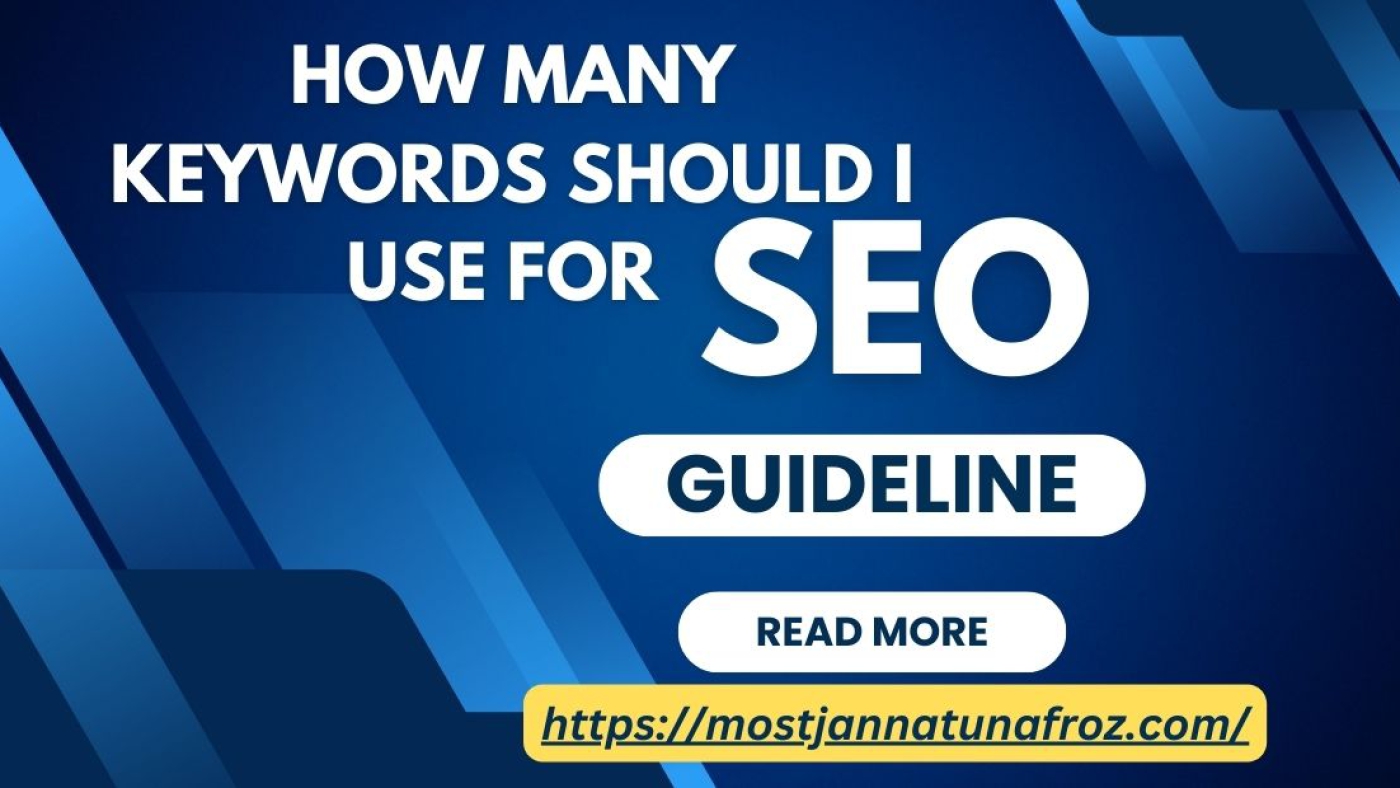In the vast digital landscape, where every click counts, the right keywords can be the beacon that guides potential customers to your website. Understanding how many keywords to use in your SEO strategy is not merely a technical concern; it’s a critical component of your overall online success. But this question often needs clarification, especially among newcomers eager to enhance their website’s visibility. So, let’s dive deep into this topic and unveil the truth about keyword usage for SEO.
The Art and Science of Keywords
Search engine optimization (SEO) starts with keyword research. These are the terms and expressions that people enter into search engines in order to find information. Imagine a potential customer looking for the perfect cycling gear—if your website contains the right keywords, you can connect with that customer at just the right moment. However, it’s not enough to load your content with keywords; you must find the delicate balance that promotes user experience and search engine rankings.
Quality Over Quantity
While it might be tempting to focus on a specific number of keywords, the emphasis should be on their quality. Instead of asking, Take into consideration, “How many keywords should I use?”Do my audience find these terms useful and relevant?
The 1% Rule
A popular SEO guideline suggests using a keyword density of about 1% to 2% in your content. This means if you have a 1,000-word article, you should aim to include your primary keyword around 10 to 20 times. However, keyword stuffing—overloading your content with keywords—can lead to a poor user experience and may even result in penalties from search engines like Google.
Long-Tail Keywords: Your Secret Weapon
In recent years, long-tail keywords have gained prominence. Targeting specialized audiences, these are lengthier, more focused sentences. For example, instead of targeting the broad keyword “cycling gear,” you could aim for “best cycling gear for beginners.” Long-tail keywords often have lower search volumes but can increase conversion rates because they closely match user intent.
Is repeat info on a website bad for seo?
When it comes to the number of keywords, incorporating a mix of primary and long-tail keywords in your content can help you cover various search queries without diluting your message.
The Importance of Context In SEO
Google’s algorithms have evolved significantly, focusing more on context and user intent than on sheer keyword count. This means that creating high-quality, informative, and engaging content is paramount. Instead of fixating on the number of keywords, aim to provide value to your readers.
Use Semantic Keywords For SEO
Consider using semantic keywords—terms related to your main keyword. For instance, if your primary keyword is “cycling gear,” semantic keywords could include “bike accessories,” “cycling clothing,” or “mountain biking equipment.” This approach helps search engines understand the context of your material, potentially resulting in higher ranks.
The Role of Content-Length For SEO
Content length is another factor influencing how many keywords you should include. Longer articles often provide more opportunities to integrate keywords naturally. Longer content typically ranks higher in search engine results, according to research. Aiming for articles between 1,500 and 2,500 words can allow you to incorporate multiple keywords and phrases while maintaining quality.
Practical Steps to Determine Keyword Usage
1. Keyword Research: Utilize tools like SEMrush, Ahrefs, or Google Keyword Planner to identify relevant keywords and analyze their search volume and competition.
2. Content Planning: Develop a content plan that includes primary and secondary keywords, focusing on user intent and providing value.
3. Natural Integration: Aim to weave keywords naturally into your content. This can include headings, subheadings, and meta descriptions.
4. Monitor Performance: Use analytics tools to track how well your content is performing. Are users engaging with it? Are you ranking for your target keywords? Change your approach in light of this information.
Finding Your Balance
The question of how many keywords to use for SEO is complex and multifaceted. It’s not merely about hitting a specific number; it’s about understanding your audience, providing value, and creating content that resonates. The emotional connection you forge with your audience through quality content will ultimately lead to higher engagement and better SEO results.
Remember, the digital world is constantly evolving, and what works today may not work tomorrow. Stay updated with the latest SEO trends and adapt your strategies accordingly. By focusing on quality and relevance rather than quantity, you’ll be well on your way to achieving your SEO goals, connecting with your audience, and enhancing your online presence.


Add a Comment